17 Things That Made People All Over the Internet Scratch Their Heads in Confusion
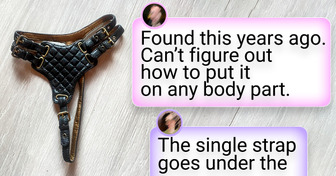
The first trip intending to land on the Moon made by human mammals took three days, three hours, and 49 minutes. The Apollo 11 astronauts needed to travel some 240,000 miles to get there! Their plan was to touch down on a place on the Moon called the Sea of Tranquility, because it had good visibility, and the terrain there was pretty smooth, well, up until the last few moments of the flight, when all these big craters appeared that they had to avoid. They finally landed with just 30 seconds of fuel left. Whew, that’s called cutting it close!
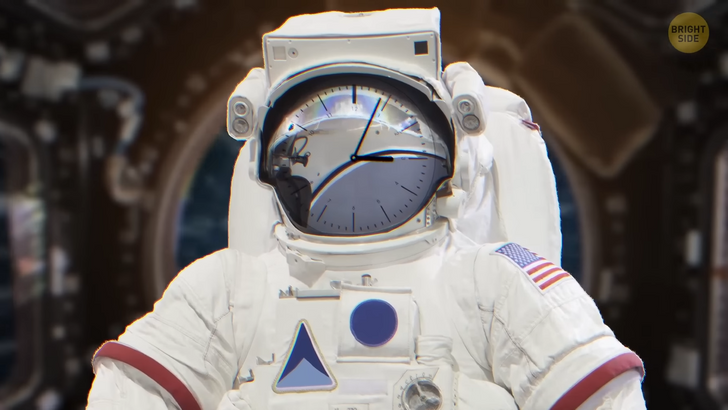
Hey, how would you like to land in your jet airliner with only 30 seconds of fuel left? So now you know. Later that day, July 20, 1969, Neil Armstrong stepped onto the lunar soil, saying, “That’s one small step for a man, one giant leap for mankind.” The astronauts were planning to sleep before the first moonwalk, but they chose to go outside earlier than scheduled. They obviously couldn’t sleep! I mean, could you? Since that first visit, our lunar satellite has accumulated quite a collection of memorabilia from Earth. Let’s look at some of the most important — and weird — stuff that humans have left on the Moon.
Take footprints, for starters. I know, they’re not technically objects, but the marks left by Neil Armstrong and Buzz Aldrin do show that humans have been there in case someone else — or something —drops by. Since the Moon doesn’t have any wind or rain, the footprints should still be relatively untouched. NASA put in a lot of effort to make sure these footprints stay protected, as well as the location of the initial Moon landing. Rules were set into place for future missions to make sure they wouldn’t alter the initial site, as it’s an important piece of history. Kinda like a National Park that you can’t get to.
Astronaut Charles Duke wanted to leave a photo of his family on the surface of the Moon. If that didn’t make him the best dad ever, I don’t know what would. He did take his family to the Moon, right? On the back of the picture, he wrote that he had come from Earth. He also added the date when he landed on the Moon, which was April 20, 1972. There’s a good chance that his family is no longer visible in the picture today. Because of the exposure to strong solar radiation, the colors in the photo have likely faded away by now. To this day, Charles Duke remains the youngest person to visit our moon. He was 36 years old at the time of his mission.
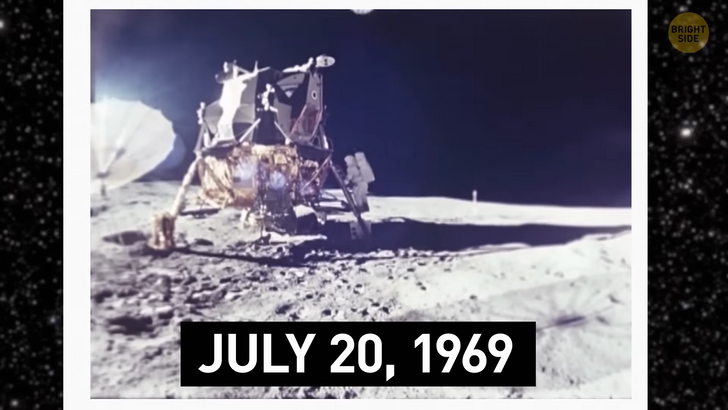
There are many flags on the surface of the Moon, too. But the flags left there must have had a similar fate to Duke’s photo — they are most likely discolored now. During each lunar landing, a flag was planted as a tradition started by Apollo 11. This tradition continued with all future Apollo missions. The flags were made using metal poles to stretch the flag, so they could be seen on the Moon. But since there is no wind, they never move.
In the 1600s, astronomer Galileo Galilei dropped two objects of different weights from the Leaning Tower of Pisa to show that the speed of the fall would be the same. In 1971, astronaut David Scott repeated the experiment on the Moon and proved Galileo’s theory correct. He dropped a feather and hammer at the same time, and as predicted, they both landed on the Moon’s surface simultaneously. Fun fact, the feather came from the Air Force Academy’s falcon mascot named Baffin, with its permission of course. These objects were both left on the lunar surface.
What about art pieces on the Moon? We’ve left some of those out there as well. The Fallen Astronaut sculpture was made by a Belgian artist and left behind by the astronauts of the Apollo 15 mission. It was a small statue requested by David Scott, the head of the mission. Scott said the statue was to memorialize the astronauts and cosmonauts who gave their lives for the advancement of space exploration.
Astronaut Alan Shepard even played some golf on the Moon during his mission on Apollo 14! He brought a golf club head (yes, he got permission first), and attached it to a tool. Then he tried to hit two golf balls. It’s hard to do in a clunky space suit. He did better on the second one. It’s safe to say that he didn’t bring the golf balls back, and they should still be there on the Moon. Fore!
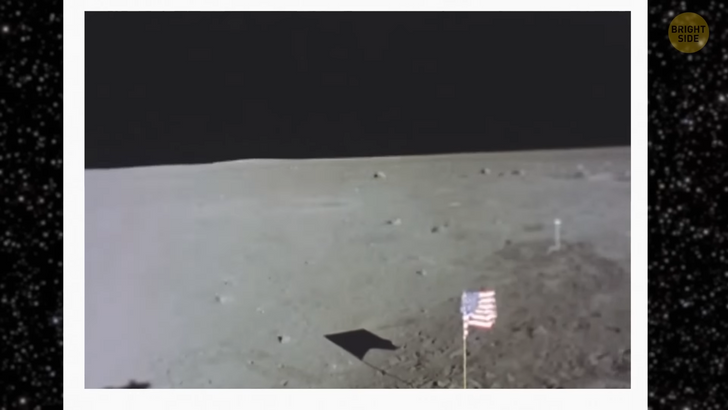
There’s yet a message from Queen Elisabeth II there. The monarch prepared a message which accompanied Neil and Buzz to Tranquility Base during the Apollo 11 mission. It was written on a tiny disk the size of a coin and also featured messages from over 70 other leaders from all over the world. I’ll bet the printing was really small. Her message said she was proud of the astronauts and their accomplishments and hoped their journey would benefit all of humanity.
The disk was then placed where Armstrong and his team first landed on the Moon. After they returned, they met the Queen at Buckingham Palace. Their encounter was memorable, too. Neil Armstrong almost couldn’t speak to the Queen at all because he had a cold. Another astronaut, named Mike Collins, was so nervous about the protocol he almost fell down the stairs.
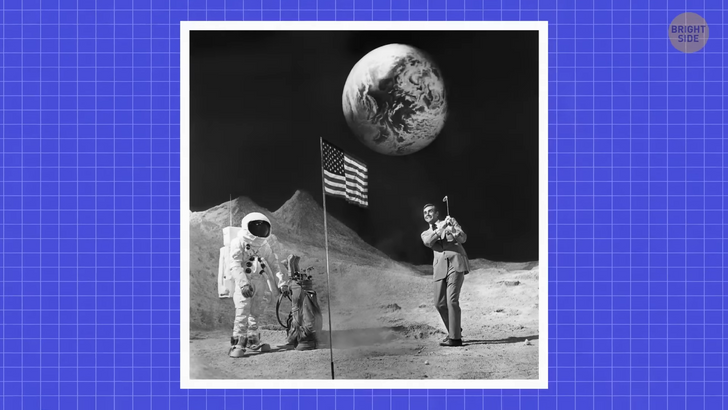
Some objects that exist today on the Moon weren’t left there on purpose. One of the most interesting moments of the Apollo 11 mission was when Neil and Buzz were getting ready to go back to Earth. They had to chuck everything they didn’t need, so they wouldn’t be weighed down at liftoff. They also needed to store all the rock samples they had gathered from the lunar surface. This created a “toss zone” that archaeologists could potentially study one day. Waste like this acts as a timeline for Earth’s history. But it can also help us understand what happens to objects that spend a lot of time on the surface of the Moon.
Most astronauts became pretty sentimental when strolling on the lunar dust. And who could blame them — they were thousands of miles away from their families. So that’s why in 1972, NASA astronaut Eugene Cernan wrote his daughter’s initials “TDC” in the dust on the Moon and gave a speech before leaving. He said, “We leave as we came and hopefully will return with peace and hope for all.” Unfortunately, this marked the end of the Apollo lunar missions. Technically, his daughter’s initials should still be there on the surface of the moon, just like all the astronauts’ footprints.
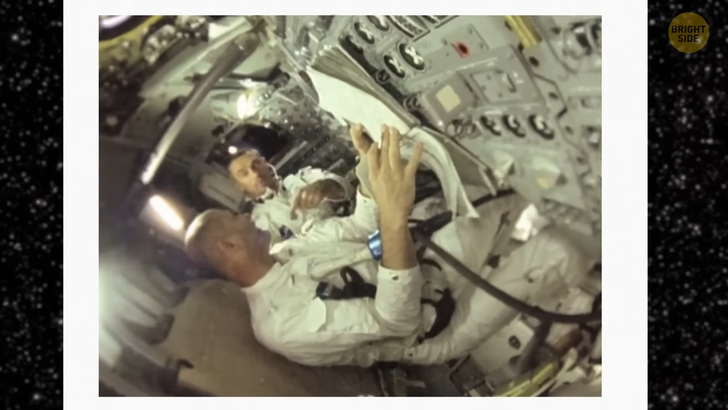
Can you believe it’s been more than 50 years since people started exploring the Moon? No worries, though, as NASA’s been preparing for future lunar explorations for quite some time. This new mission is called Artemis, and it aims to build some sort of settlement out there. This way, the Moon can be studied in safe conditions for longer periods of time.
For starters, NASA launched Orion, a spacecraft without a crew on board, to orbit the Moon and come back to Earth. This was a test drive. Before NASA transports people to the Moon again using newer technology, all safety measures need to be worked out and confirmed. But one day soon, Orion is going to take astronauts back to the Moon.
One cool thing about this spacecraft is that it comes with a launch abort system which is meant to keep astronauts safe in case something goes bad during the launch. It also features a special service module, which is like a battery that fuels and propels Orion through space. It also supplies astronauts with water, oxygen, and power and provides temperature control.
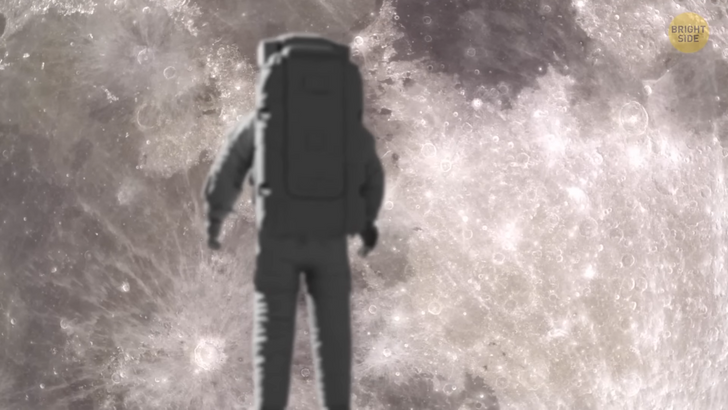
But Artemis also looks to build a long-term human settlement on our satellite somewhere around the 2030s. However, searching for a cozy place on the Moon isn’t as easy as you’d think. Thankfully, NASA specialists produced an ingenious idea. They found some lava tubes on the surface of the Moon, and they have pretty steady temperatures inside.
The main problem with the first Moon landing back in 1969 was extreme temperature fluctuations. So, these caves might be the perfect solution. Not only is the temperature in there suitable for humans, but they could also help shield astronauts from cosmic rays, solar radiation, and meteorites.
It’s also good news that we have similar structures here on Earth. Before we get back to space, we can study them to better understand those found on the Moon. Here on Earth, these holes form once the top of a stream of lava solidifies, and the molten rock inside drains away, creating this tube.











